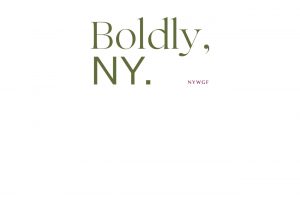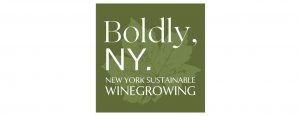Sustainability has, in recent years, become one of the hottest topics in the wine world, against the backdrop of an ever more challenging growing environment and of the increasing awareness of consumers. It is not always analysed, however, in all its aspects and facets; sustainable winegrowing goes well beyond viticultural practices, touching on cultural, economic and logistical aspects as well.
It was with this holistic understanding that the New York Wine & Grape Foundation (NYWGF) created its sustainability program, New York Sustainable Winegrowing. Following the success of the pilot launch, the NYWGF is now fully rolling out this comprehensive action plan with the aim of helping growers understand and implement sustainable practices with a view towards certification. For Justin Jackson, the program’s manager, the challenge is to create value across the supply chain, from grape to glass, to support those producers committed to the transition to more sustainable practices.
Fred Merwarth, co-owner and head winemaker at Hermann J. Wiemer, one of the earliest and most committed champions of sustainability in New York State, agrees that the region’s growers ‘have been on a journey’. The state’s many bodies of water, while providing an essential temperature moderating effect, also create significant disease pressure. The region’s native (non-vinifera) were well adapted to these challenging conditions, but that is not the case with vitis vinifera. ‘Many growers transition from native and hybrid winegrowing. Vinifera needs to be treated differently and the demands are much higher. So they had to learn how to grow great vinifera grapes. And there’s an increasing number of wineries interested in sustainability.’
Merwath acknowledges, from his own experience implementing organic and biodynamic practices at H.J. Wiemer, that it’s not an easy path – but there’s always a starting point. ‘Even small changes, like changing [phytopharmaceutical] products to more bio-driven alternatives, are positive and drive change. Many small growers are seeing that there’s a way towards sustainability and away from conventional practices.’
On the other hand, a renewed interest, from winemakers and consumers alike, on native and hybrid varieties, poses an interesting possibility, and an added tool, to deal with a challenging growing environment, while saving resources. ‘Winemakers, especially small, are kicking back into hybrid production and producing pét-nats, blends, skin contact wines, … And there’s a strong argument, within the realm of sustainability, to justify this. It really brings down the viticultural footprint.’ While H.J. Wiemer only focuses on growing vinifera, Merwarth acknowledges there will surely be a movement towards replanting natives, hybrids and PIWI varieties, alongside the better understanding of how to grow vinifera in a balanced way. A big part of which, he adds, has to do with precision. ‘The extreme variability of vintages means that we have to make very specific and informed decisions about canopy management, treatments, etc. And to be very honest with the mesoclimates one is working with. We adjust the way we work to the conditions of each plot. This justifies a hybrid, realistic approach, in which we run some plots organically and biodynamically, because we can, but still have a more conventional approach to plots where conditions are more complex.’

Courtesy of Wölffer Estate
Both Merwath and Jackson agree that, ultimately, there needs to be a market-driven motivation to support and justify change. The international success of producers such as H.J. Wiemer and the other names below, has cemented a recognition, within the region and beyond, that justifies the standards they are working to define and implement. This in turn motivates others to follow and consolidates a best-practice approach among the growers that supply their grapes.
Jackson stresses the importance of the NYWGF sustainability program’s consumer-facing aspect. ‘We need to raise awareness among consumers and create an easy, visible way [through certification mentions on the labels] to communicate the work and standards behind the bottle seen on a shelf. The consumer needs to vote with their dollar.’
New York’s rich and complex viticultural history does present an immense potential for resilience in the future. If regions around the world are grappling with the challenges of climate change, the New York wine region is, arguably, in a unique position to face them. Both history and local expertise provide a good foundation to embrace the future of viticulture with a particular awareness of the difficulties at hand and of the most sustainable, yet realistic, ways to approach them.
Five NY sustainable wines to try:
Tasted and scored by the Decanter team

Boundary Breaks, Riesling Dry #239, Seneca Lake, Finger Lakes 2021
93 points
Focus, complexity and texture are the three words that best define this classic cool climate Riesling. A strong but very elegant mineral framework supports rich flavours of ripe pears, lemon, peach and white grapefruit. There’s juiciness but also great focus and precision, with a saline edge through. Very seductive, well crafted and with significant ageing potential. A perfect introduction to Boundary Break’s ‘Made in the Vineyard’ philosophy, with the balance between acidity and fruit generosity in full display.
boundarybreaks.com
 Ravines, Dry Riesling, Finger Lakes 2019
Ravines, Dry Riesling, Finger Lakes 2019
93 points
One of the Finger Lakes most iconic estates, winner of many accolades and widely recognised, by consumers and critics alike, as the producers of one of the region’s best expressions of Riesling. This wine does seem to support the claim, with its expressive aromas of lemon zest, green apple peel and Asian pear with hay and white flower nuances. The palate is firm and structured, resting upon a textural mineral structure. Great acid drive and lingering flavours of conference pear and peach.
ravineswine.com
 Hermann J. Wiemer, Flower Day Riesling, Seneca Lake, Finger Lakes 2019
Hermann J. Wiemer, Flower Day Riesling, Seneca Lake, Finger Lakes 2019
91 points
The biodynamic calendar classifies days according to four categories – root, flower, fruit, and leaf – that guide the work dynamics in the vineyard and cellar. On flower days the vineyard is left to rest and bloom, and this wine is a suitable calling to days of relaxation and enjoyment. A sweet core of ripe orchard fruit (peach, pear, yellow apples) and fleshy citrus (lemon, mandarine) is offset by a firm acid grip and a playful oily touch. Hailing from H.J. Wiemer eponymous estate vineyard, this is a great showcase of the unpretentious and technically pristine way in which the Finger Lakes estate has implemented – and pioneered – biodynamic practices.
www.wiemer.com
 Wölffer Estate, Antonov Sauvignon Blanc, Sagaponack, Long Island 2021
Wölffer Estate, Antonov Sauvignon Blanc, Sagaponack, Long Island 2021
90 points
With grapes certified under the Long Island Sustainable Winegrowing programme and wider-reaching initiatives to reduce energy use and promote biodiversity, Wölffer has been one of the leading promoters of sustainable practices in the Long Island region. This Sauvignon Blanc is part of the estate’s flagship White Horse range. Named after Joey Wölffer’s prized stallion, it shares with Antonov the same poise and robust elegance. Intense aromas of gooseberry, lime zest and fig leaf are followed by a palate with drive and precision, with a tropical touch of papaya and passionfruit. The mineral backbone and subtle salinity make this a quintessential food wine.
www.wolffer.com
 Paumanok, Cabernet Franc, Aquebogue, Long Island 2019
Paumanok, Cabernet Franc, Aquebogue, Long Island 2019
92 points
Named after the term the great poet Walt Whitman used to describe the place where the vineyards are located, Paumonok is a family-owned and operated winery on the North Fork of Long Island. The Massouds produce a focused range of vitis vinifera wines, using estate-grown fruit only, with great care placed on viticultural practices that deliver concentrated, expressive fruit. This Cabernet Franc being an excellent case in point, with its exceedingly vibrant and well defined flavours of cranberry, cherry, plum and pomegranate, lined by a zesty touch of blood orange. The tannins are fine and refreshing, lifting the mid palate with energy and ease. A fine expression of Cabernet Franc, at once sophisticated and enjoyable.
www.paumanok.com
Discover more about New York State wines and producers
Connect on:
Facebook | Instagram | Twitter | YouTube









